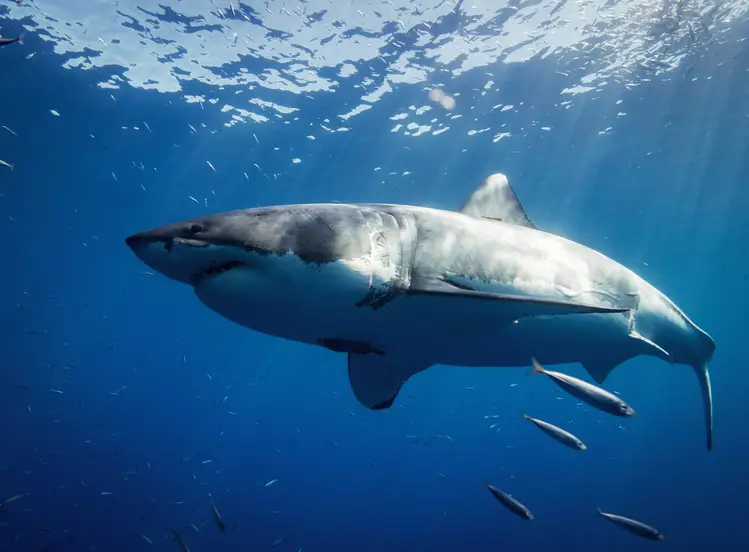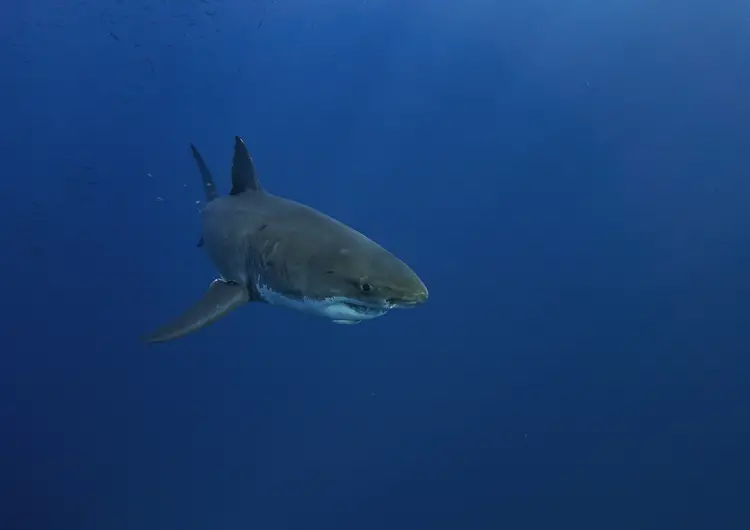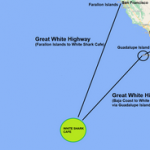
Have you ever wondered why great white sharks aren’t seen in captivity? In fact great white sharks have been kept in large aquariums, but the problem is they don’t live for very long once they’ve been put into an aquarium. So you might then ask why do great white sharks die in captivity?
It appears from research that great white sharks die in captivity due to a build up of toxic levels of lactic acid. It is assumed the high level of lactic acid cannot be dissolved unless the sharks process large amounts of oxygen, which is something they don’t seem to be able to do in an aquarium.
The best way to do more diving is to book yourself on a scuba diving liveaboard. If you are interested in diving with great white sharks, one of the best ways to do so is to dive from a liveaboard at Guadalupe Island off Mexico. You can check the latest and best deals on liveaboards using the following window:
As an avid scuba diver I don’t like the idea of great white sharks being kept in captivity in any case. So this pleases me that great white sharks can’t be kept in aquariums. Whilst on the other hand it would be quite exciting to visit an aquarium to see a great white shark up close and personal, but I’d prefer to keep this experience to the wild, which is what I did in South Africa.
Monterey Bay Aquarium is the only place in the world that’s been able to have a great white shark in captivity for more than 16 days.
This is a video of a great white shark in Monterey Bay Aquarium, which is a one million gallon aquarium tank. This white shark was their 5th great white shark they had put in captivity, which was in 2009.
For the fifth time, the Aquarium places a young white shark on exhibit. The five-foot, three-inch shark was collected by Aquarium staff August 12 near Malibu, California, and placed in the million-gallon Outer Bay exhibit on August 26.
This is another juvenile great white shark also in Monterey Bay Aquarium, on exhibit in September 2011 as their sixth great white shark in captivity:
The juvenile great white shark looks at home in the renovated Open Sea exhibit, where he swims alongside hammerhead sharks, dolphinfish and other animals.
Do great white sharks die in captivity?
Adult great white sharks always die in captivity and this usually happens within only a few days of being put into an aquarium. The most recent example is when a great white shark was put in the Okinawa Churaumi Aquarium in Japan, this great white shark survived for just three days before it died.
Can lactic acid be toxic for great white sharks?
If great white sharks develop a high enough level of lactic acid, they’re not always able to rebound from it. The lactic acid can permanently effect their bodies and leads to sickness or even death. Stress in sharks can cause the build up of lactic acid, which can escalate to dangerous levels.
In a study of a catch and release for sharks, the trauma it caused was too much for some sharks, and in particular hammerhead sharks.
“In a study to determine the physiological effects of stress due to line fishing, scientists found that most sharks showed high levels of lactic acid in their blood, and that hammerhead sharks were most sensitive and had a higher mortality rate after release.”
“Satellite tracking also revealed that, compared to other shark species in the study, hammerheads had a higher incidence of death after release.”
Earth Sky – Catch-And-Release Fishing Creates Too Much Trauma For Some Sharks

What happened to the great white shark at the Monterey Bay Aquarium?
The first of five great white sharks at Monterey Bay Aquarium lived for 198 days and the rest died within a few days of being placed in captivity. The sixth great white shark at the Monterey Bay Aquarium was also a success, as it lasted 6 months until it was released back into the wild.
The reason why it was a success for this captive great white shark was because it was a small shark of only 1.2 metres (4 feet) in length. Whereas adult great white sharks are usually around 5 metres (16.4 feet) long, which are too big for the size of the aquarium that suited the young white shark.
This was found to be true of an adult great white shark in Japan when they had a 3.5 metre (11.5 feet) white shark in captivity that lasted just three days until it died.

Are there any great white sharks in captivity?
There are no great white sharks in captivity, as it is extremely difficult to keep them alive in aquariums, even if these water tanks are huge. The great white sharks that have been kept in captivity before have either died or have been released back into the wild before they die.
Why can’t great white sharks stay in captivity?
The main reason great white sharks can’t stay in captivity is due to a build up of toxic levels of lactic acid, which causes a delayed death in the sharks. Great whites also don’t eat in captivity and need help swimming, as they need to swim constantly for water to flow over their gills to breathe.
Adult great white sharks end up bumping into the glass, which injures their noses and their sides, which stresses the sharks.
What is the longest a great white shark has lived in captivity?
The longest a great white shark has lived in captivity is 198 days in the Monterey Bay Aquarium, which was a shark that had been accidentally caught by halibut fishermen in 2004. The Monterey Bay Aquarium also kept a young great white shark captive for 6 months until its release in 2011.
Great white shark in captivity SeaWorld
Sea World in San Diego has had over 12 great white sharks in captivity, with only one of them being released back into the wild after 10 days. Sea World no longer has any great white sharks in captivity.
What happened to the great white shark at Seaworld?
The last juvenile great white shark at Sea World was released back into the ocean after just 10 days in captivity after it didn’t eat. This followed the previous great white shark which died after 16 days in captivity. Sea World made desperate attempts to save the young shark by force feeding it.

Monterey Bay Aquarium great white shark 2020
In 2020 the great white sharks at Monterey Bay Aquarium are the ones in the ocean and not in captivity. Monterey Bay Aquarium are researching and studying the great whites of the Farallon Islands.
For those of you who would like to see great white sharks in the wild, you should take a read of this article about the best places to cage dive with great white sharks. The article includes six of the best places to cage dive with white sharks, which includes the Farallon Islands in the USA, Shark Alley in South Africa or Neptune Island in New Zealand.
Or go cage diving from San Diego with great white sharks. These cage diving trips run from San Diego to Guadalupe Island, which is a great white hot spot.
Does the Monterey Bay Aquarium have a great white shark?
Monterey Bay Aquarium no longer has a great white shark in captivity after the last shark they had in the aquarium was released back into the wild in 2011.
When did Monterey Bay Aquarium have a great white shark?
Monterey Bay Aquarium had its first great white shark in 2004 that lasted just 11 days and its last white shark in 2011 which was released back into the wild after 6 months.
Monterey Bay Aquarium Project White Shark — The Farallon Islands
Fins up if you’ve ever wanted to be a shark scientist! Our own Dr. Sal Jorgensen and his colleagues are living the dream: tagging and observing California’s white sharks to uncover the mysteries of our local mega-fish!
Seeing that you’re interested in scuba diving with sharks, or at least interested in staying safe around sharks, you may also like to read this article about great white sharks in the Caribbean and the Gulf of Mexico. You may be surprised by what you read, I certainly was!
This article is also interesting, which is about a great white shark pinged near to the Maldives.
But then if you want to be really surprised, take a read of this article about a great white shark spotted by a snorkeler off the southern Great Barrier Reef. The article includes a video of the white shark concerned.
I hope you enjoyed this page about why do great white sharks die in captivity
If you have more questions either about snorkelling or scuba diving (or specifically about why do great white sharks die in captivity), please comment below with your questions.
Please share your experiences, plus dive sites, resorts and liveaboards you recommend. Share the time of year of your trip together with what you saw, the visibility, currents and dive operator, as this will help others who read this page.
There will also be many more pages and articles about scuba and scuba diving safety tips (and on snorkelling too) for you to read and learn about this fabulous sport.
Have fun and be safe!





